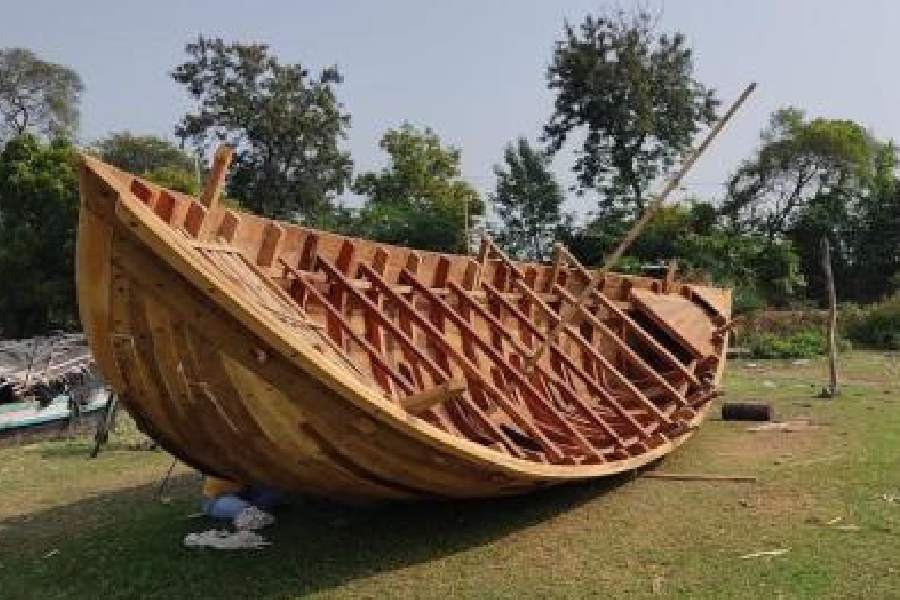The chhot boat that boatmaker Panchanan Mandal built at Shyampur block of Bagnan, Howrah, for the Endangered Material Knowledge Programme (EMKP) of the British Museum is now languishing at Dihimondalghat in the district.
Chhot boats — deep V-shaped boats — are about 3.5ft tall and need at least 6ft of water to sail. But the Roopnarayan river at Shymapur is shallow with chars and chhot boats can no longer be used.
The wooden plank boat without the customary coat of protection of alkatra (coal tar) is being subjected to the vagaries of nature with rain water accumulated inside it. The boat will rot if it is not properly maintained, said Swarup Bhattacharya, who was part of the project of recording the making of the chhot boat.

The present condition of the boat
Built over a month with financial aid from EMKP, the chhot boat-making procedure has been documented in detail by Zeeshan Ali Shaikh, a maritime archaeologist and ethnographer.
The boat was put on the Roopnarayan water in November last year with much fanfare. But since then, it has been moored to the banks.
Shaikh, with Bhattacharya, a visiting fellow of the Anthropological Survey of India, Vasant Shinde of the Central University of Haryana and John Cooper of Exeter University collaborated on the project titled "The chhot-builders of West Bengal project: documenting the vanishing craft knowledge of a unique boat-building tradition".
The project was to document the endangered craft of chhot boat-making from start to finish.
The documentation and archiving process is still on.
Once it is done, the material will be available on the British Museum’s open access digital archive.
Shinde had proposed that after the boat was made, it be displayed at the National Maritime Museum in Gujarat. However, the museum will take another six months to come up.
“The museum will be inaugurated in January or February next year. Till then, we propose to approach the Indian Port Association to take care of the chhot boat,” said Shinde.
Panchanan Mandal and his four sons who built the boat are worried. “It should be dragged to the bank and laid on its side for the accumulated water to run out,” said Mandal, who is too old to arrange for this.
“The boat needs to be maintained but who will pay for it,” said Bhattacharya.
